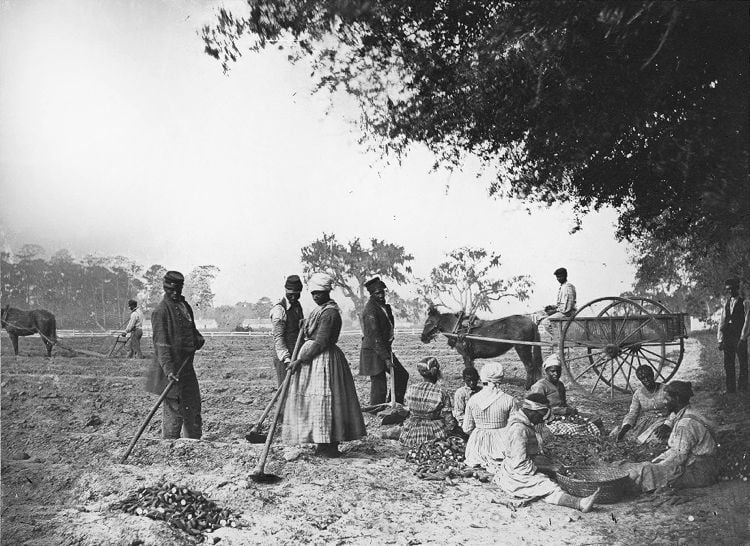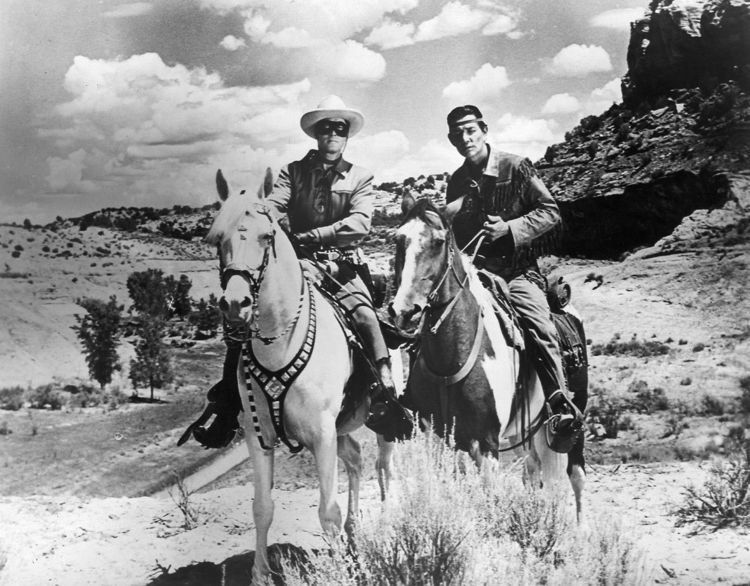From escaping slavery as a young man to arresting 3,000 outlaws as a deputy, the story of Bass Reeves is the stuff of legend.
Contrary to what classic Westerns might lead us to believe, one in four American cowboys was actually African American. But we don’t necessarily get that reality when the only image of a cowboy that we have in our minds is John Wayne or The Lone Ranger.
But interestingly enough, the inspiration behind The Lone Ranger may have actually been the real-life Deputy U.S. Marshal Bass Reeves, a Black man who fled the Civil War, befriended the Seminole and Creek Indians, and eventually became one of the greatest lawmen in the Wild West.
As the story goes, Reeves arrested more than 3,000 outlaws and killed 14 criminals — without ever sustaining a gunshot wound. His whole life was defined by stranger-than-fiction experiences. And many people whom he arrested were sent to the House of Corrections in Detroit, which was the same city where The Lone Ranger was first introduced via radio in 1933.
Of course, it’s worth noting that there’s no concrete proof that Bass Reeves inspired the famous character. But according to biographer Art T. Burton, “Bass Reeves is the closest real person to resemble the fictional Lone Ranger on the American western frontier of the nineteenth century.”
And in some ways, Reeves’ real life was even more incredible than the fictional character he potentially inspired.

From Slave To Soldier On The Run

Wikimedia CommonsBass Reeves was born during the Antebellum Era, a turbulent time period before the American Civil War.
Born a slave in 1838 in Crawford County, Arkansas, Bass Reeves served Arkansas state legislator William S. Reeves. Initially, Bass Reeves worked as a water boy and later became a field hand.
When William S. Reeves died, his son George made Bass Reeves his personal companion and servant. And when the Civil War broke out, Reeves went into battle with his master and was forced to fight for the Confederacy.
It was during the Civil War that Reeves made his great escape. As the story goes, Reeves beat up his master after a dispute over cards — and then fled to avoid punishment. (However, others say Reeves simply heard that slaves were being freed and decided to run in order to free himself.)

The New York Public LibraryAn illustration of a Confederate campsite during the Civil War.
Whatever the case, Reeves soon took refuge with the Creek and Seminole Indians in what is now Oklahoma. He learned their languages and customs, and sharpened his skills as an ambidextrous marksman.
When all slaves were freed in 1865, Reeves was no longer a fugitive. So he decided to leave Indian Territory to farm his own land near Van Buren, Arkansas. A year later, he married Nellie Jennie of Texas. The couple ultimately raised five girls and five boys together.
While Reeves was a successful farmer, rancher, and father, he occasionally worked as a scout and used his tracking skills to help lawmen find criminals — but his true second act had yet to begin.
How Bass Reeves Became A Deputy U.S. Marshal

Wikimedia CommonsBass Reeves was known for his exceptional shooting skills — and his ability to dodge bullets.
In 1875, Isaac C. Parker was appointed federal judge of Indian Territory. During the chaos of the Civil War, Indian Territory — where federal and state governments had virtually no jurisdiction — had become a popular hiding ground for outlaws. And fugitives took full advantage of the area.
Parker hired U.S. Marshal James F. Fagan to lead 200 deputies in the pursuit of these outlaws. The stories of Reeves’ familiarity with the land and his own fugitive past eventually got around to Fagan. And Reeves was soon hired on as a Deputy U.S. Marshal. Reeves, along with the other deputies, was ordered to bring the outlaws back to Parker — dead or alive.
Bass Reeves took his job very seriously.
Standing six feet, two inches tall, he was often seen riding a large white stallion as he patrolled all 75,000 square miles of Indian Territory. The rough and tough lawman — decked out in an intimidating hat, slick suits, polished shoes, and two colt .45 Peacemakers strapped at his sides — reportedly arrested over 3,000 outlaws.

The New York Public LibraryAn illustration of a shootout in the Wild West.
In the course of doing so, Reeves was involved in his fair share of shootouts. But despite being shot at on multiple occasions, he managed to dodge every single bullet, earning him the moniker “The Indomitable Marshal.”
However, dodging bullets was by no means his only skill. Reeves used the fact that he’d never learned how to read or write to his advantage in an inventive and effective way. Before going on a pursuit, he would have someone read him the warrants so he could memorize which was which.
Then, he would often distract outlaws with a clever gimmick, asking them to read the warrant or some other letter for him. And as the criminals became confused and distracted, Reeves would draw his gun.
By all accounts, Reeves was also a master of disguise. He would appear to felons as a cowboy, farmer, or even as a fellow outlaw. And when he wasn’t in disguise, he was recognized by the silver dollars he left as his calling card.
The Real Lone Ranger Lost To History

Wikimedia CommonsBelle Starr (left), a notorious horse thief, was arrested by Bass Reeves in 1883.
Despite his many disguises and calling cards, Bass Reeves always treated his position with great respect. Even in the face of morally conflicting circumstances, Reeves held the law above all else.
In 1902, Bass Reeves’ son, Benny, was charged with the murder of his wife. Though shaken by the thought of it, Reeves soon arrested his own son. Reeves, though reluctant to take on the difficult task, did the job when no other deputy dared to. Benny Reeves served 22 years at Leavenworth Prison.
By 1907, law enforcement was put in the hands of state agencies. Reeves, who at this point was now nearly 70, joined the Muskogee Oklahoma Police Department as the only Black patrolman. Just a few years later, on January 12, 1910, Bass Reeves died of Bright’s disease — an outdated term for a kidney disease that is now known as nephritis.

Wikimedia CommonsThe Lone Ranger, Tonto, and his silver stallion from the 1950s TV series The Lone Ranger.
Although Bass Reeves’ accomplishments as a lawman greatly overshadow those of many of his more famous white contemporaries, the legend of Bass Reeves was, for the most part, lost to history.
The Lone Ranger, the iconic character who was virtually synonymous with the myth of the American West, was played by a white man, even though his character may have possibly been inspired by Reeves.
However, in recent years, Reeves’ story has started to get more attention. In 2013, he was inducted into the Texas Trail of Fame. A bridge in Oklahoma has been named after him. There have also been quite a few impressive bronze statues that were erected in his likeness. And perhaps most exciting, he was portrayed in the HBO series Watchmen in 2019.
The legendary actor and director Morgan Freeman has also expressed interest in working on a project focused on the deputy. Freeman said that he has always wanted to do his own Western — as long as it’s about Bass Reeves.
Freeman said, “This is a Black man in America’s legendary Western history who has been totally overlooked. Any chance I get to revisit historical moments of our country is important to me.”
After reading about Bass Reeves, take a look at 9 iconic Black soldiers who risked it all to fight for America. Then, learn about the Buffalo Soldiers, the first all-Black peacetime regiments in U.S. history.






